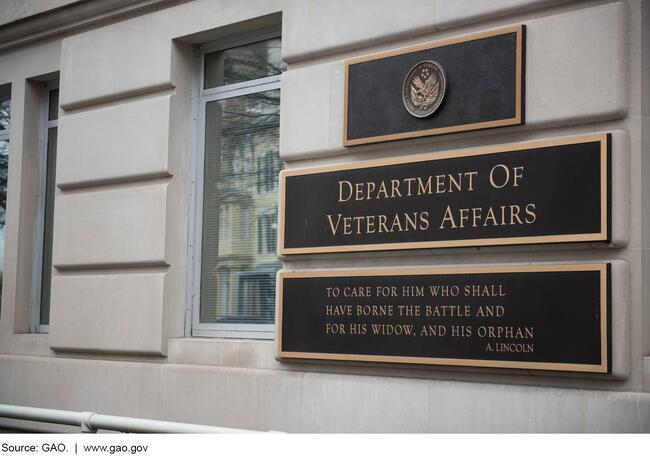Sexual Harassment: VA Needs to Better Protect Employees
Fast Facts
We testified about our recent report on sexual harassment at the Department of Veterans Affairs.
VA has policies to prevent and address harassment, but some are inconsistent and incomplete. For example, the person who oversees personnel functions (e.g., hiring, promotions) is the same person who oversees the complaint process. This can create a conflict of interest.
In addition, VA doesn't centrally collect information on all complaints—making it harder to direct its resources for preventing and addressing sexual harassment where they're needed most.
Our report made 7 recommendations to address these and other issues we found.

Highlights
What GAO Found
According to data from the most recent Merit Systems Protection Board (MSPB) survey in 2016, an estimated 22 percent of Department of Veterans Affairs (VA) employees, and 14 percent of federal employees overall, experienced some form of sexual harassment in the workplace from mid-2014 through mid-2016. VA has policies to prevent and address sexual harassment in the workplace, but some aspects of the policies and of the complaint processes may hinder those efforts.
- Misalignment of Equal Employment Opportunity (EEO) Director position: VA's EEO Director oversees both the EEO complaint process, which includes addressing sexual harassment complaints, and general personnel functions. According to the Equal Employment Opportunity Commission (EEOC), this dual role does not adhere to one of its key directives and creates a potential conflict of interest when handling EEO issues.
- Incomplete or outdated policies and information: VA has an overarching policy for its efforts to prevent and address sexual harassment of its employees. However, some additional policies and information documents are not consistent with VA's overarching policy, are outdated, or are missing information. For example, they may not include all options employees have for reporting sexual harassment, which could result in confusion among employees and managers.
- Delayed finalization of Harassment Prevention Program (HPP): VA has not formally approved the directive or the implementing guidance for its 4-year-old HPP, which seeks to prevent harassment and address it before it becomes unlawful. Lack of formal approval could limit the program's effectiveness.
VA uses complaint data to understand the extent of sexual harassment at the agency, but such data are incomplete. For example, VA compiles information on allegations made through the EEO process and HPP, but does not require managers who receive complaints to report them to VA centrally. As a result, VA is not aware of all sexual harassment allegations across the agency. Without these data, VA may miss opportunities to better track prevalence and to improve its efforts to prevent and address sexual harassment.
VA provides training for all employees and managers, but the required training does not have in-depth information on identifying and addressing sexual harassment and does not mention HPP. Some facilities within VA's administrations supplement the training, but providing additional information is not mandatory. Requiring additional training on sexual harassment could improve VA employees' knowledge of the agency's policies and help prevent and address sexual harassment.
Why GAO Did This Study
In June 2020, GAO issued a report entitled Sexual Harassment: Inconsistent and Incomplete Policies and Information Hinder VA's Efforts to Protect Employees (GAO-20-387). This testimony summarizes the findings and recommendations from that report, including (1) the extent to which VA has policies to prevent and address sexual harassment of VA employees, (2) how available data inform VA about sexual harassment of its employees, and (3) training VA provides to employees on preventing and addressing sexual harassment.
Recommendations
GAO made seven recommendations in its June 2020 report, including that VA ensure its EEO Director position is not responsible for personnel functions; require managers to report all sexual harassment complaints centrally; and require additional employee training. VA concurred with all but the EEO Director position recommendation, which GAO continues to believe is warranted.
